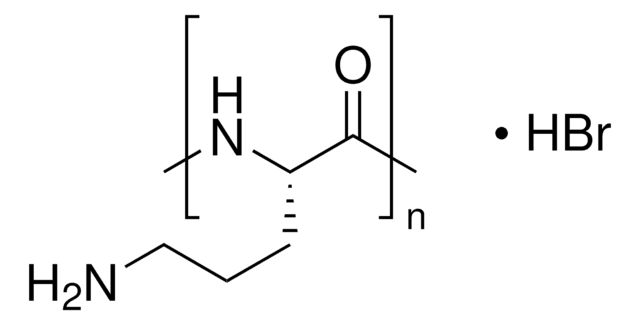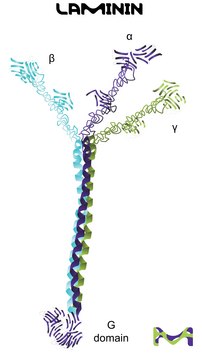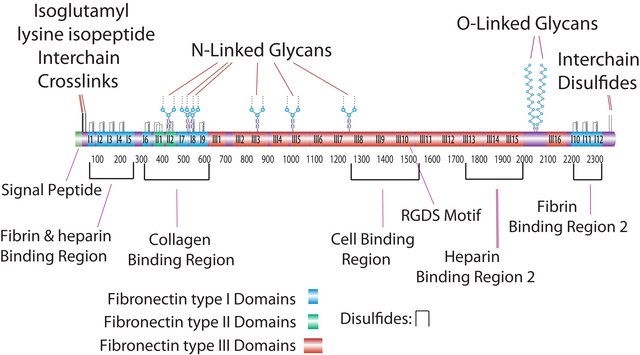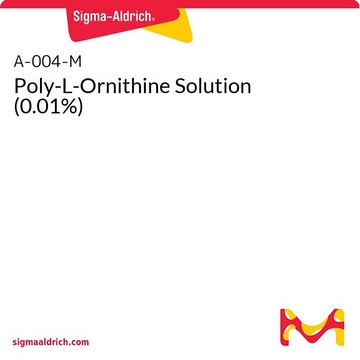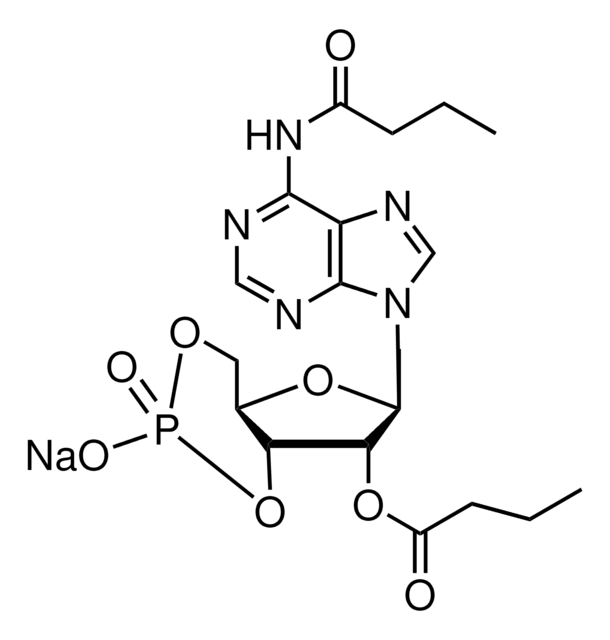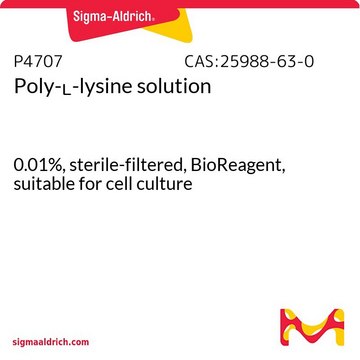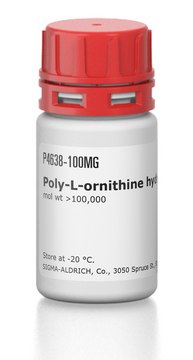P3655
Poly-L-ornithine hydrobromide
suitable for cell culture, Mol wt 30,000-70,000
Synonym(s):
L-Ornithine homopolymer hydrobromide
Select a Size
Select a Size
About This Item
Recommended Products
Product Name
Poly-L-ornithine hydrobromide, mol wt 30,000-70,000
form
powder
Quality Level
mol wt
30,000-70,000
technique(s)
cell culture | mammalian: suitable
color
white to off-white
storage temp.
−20°C
SMILES string
[Br-].NC(CCCN)C(=O)O.[H+]
InChI
1S/C5H12N2O2.BrH/c6-3-1-2-4(7)5(8)9;/h4H,1-3,6-7H2,(H,8,9);1H
InChI key
GWRQMKDBBHFVIZ-UHFFFAOYSA-N
Looking for similar products? Visit Product Comparison Guide
Related Categories
Application
Biochem/physiol Actions
Analysis Note
Storage Class Code
11 - Combustible Solids
WGK
WGK 3
Flash Point(F)
Not applicable
Flash Point(C)
Not applicable
Personal Protective Equipment
Choose from one of the most recent versions:
Certificates of Analysis (COA)
Don't see the Right Version?
If you require a particular version, you can look up a specific certificate by the Lot or Batch number.
Already Own This Product?
Find documentation for the products that you have recently purchased in the Document Library.
progenitor cells from human cerebrospinal fluid in fetal
cystic myelomeningocele
Articles
Discover L-ornithine, an important amino acid supplement, explore how L-ornithine is used in CHO and iPSC culture, and discover how poly-L-ornithine is used to enhance cell attachment.
Amino Acid Codon Wheel for fast RNA translation. Find which amino acid is translated from your RNA sequence quickly and easily.
Humankind has utilized protein materials throughout its existence, starting with the use of materials such as wool and silk for warmth and protection from the elements and continuing with the use of recombinant DNA techniques to synthesize proteins with unique and useful properties.
Our team of scientists has experience in all areas of research including Life Science, Material Science, Chemical Synthesis, Chromatography, Analytical and many others.
Contact Technical Service